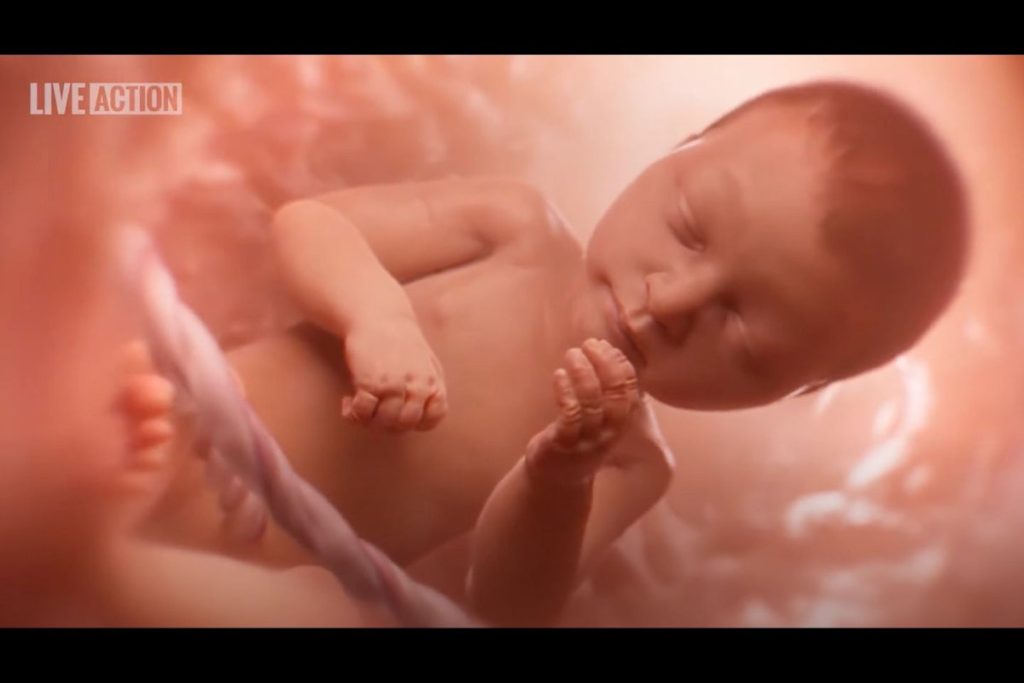Listen to the article
Ohio lawmaker’s prenatal education bill faces strong opposition from abortion advocates, highlighting deepening educational divide on human development.
Ohio Representative Melanie Miller has found herself at the center of controversy after introducing The Baby Olivia Act last month. The proposed legislation, which would require public schools in Ohio to provide prenatal development education, has sparked intense pushback from pro-abortion advocates and reignited debate over how human development is taught in classrooms.
The bill centers around educational content like the “Baby Olivia” video, a computer animation developed by Live Action that depicts human development from fertilization onward. While supporters call the video medically accurate and educationally valuable, critics have denounced it as misleading propaganda.
Lauren Rankin, a journalist, abortion advocate, and former abortion clinic escort, has emerged as one of the bill’s most vocal opponents. Rankin criticized the video as “anti-abortion nonsense” and claimed it lacks medical credibility. “These videos aren’t produced by OB-GYNs or scientists. They aren’t based on medical information,” Rankin stated.
However, Live Action maintains that the video was developed alongside a panel of medical experts specializing in embryonic and fetal development. This panel included Dr. David Bolender, PhD in Cell Biology from the Medical College of Wisconsin, along with specialists from the American Association of Pro-Life Obstetricians and Gynecologists (AAPLOG) and the Charlotte Lozier Institute.
Dr. Kathi Aultman, a board-certified OB-GYN and Fellow of the American College of Obstetricians and Gynecologists, has publicly endorsed the video, calling it “a spectacular and medically accurate portrayal of the development of a baby girl within the womb.” She noted that the content draws from the Endowment for Human Development (EHD), which she described as “a highly respected scientific source on embryology and fetal development.”
One specific point of contention involves the timing of fetal hiccups. Rankin claims these don’t begin until 23 weeks of pregnancy, but supporters of the video cite research published in Developmental Medicine & Child Neurology indicating that hiccups appear between 7.5-8.5 weeks post-fertilization, consistent with the video’s timeline.
The debate extends beyond scientific details to broader questions about age-appropriate education. Rankin characterized the bill as “a blatant attempt to brainwash young children,” expressing concern that third-graders may be too young for such content.
Supporters of the bill counter by pointing to what they see as inconsistency in the opposition’s stance on age-appropriateness. They note that organizations like Planned Parenthood, which describes itself as the “single largest provider of sex education,” advocate for sex education beginning as early as kindergarten.
Ohio is not the first state to consider such legislation. Similar “Baby Olivia” laws have passed in other states, establishing various requirements for prenatal education in public schools. These laws typically mandate content showing fetal development through ultrasound imagery and other educational materials.
The controversy highlights the politically charged nature of reproductive education in American schools. While supporters frame the bill as filling a gap in biological education, critics see it as a politically motivated attempt to influence young people against abortion rights.
As the Ohio legislature continues to debate the merits of The Baby Olivia Act, the dispute underscores how deeply divided Americans remain on reproductive rights issues. The outcome may have implications not just for Ohio classrooms but for how prenatal development is taught nationwide.
The bill remains under consideration in the Ohio legislature, where it faces an uncertain future amid the intensifying public debate.
Fact Checker
Verify the accuracy of this article using The Disinformation Commission analysis and real-time sources.




10 Comments
This is a challenging issue that highlights the need for nuance and objectivity when it comes to teaching sensitive topics related to human development and reproduction. I’ll be interested to see how this plays out.
The debate over this bill seems to be less about the video’s medical accuracy and more about the broader political battle over abortion. It’s important to keep the focus on the educational merits rather than getting caught up in partisan posturing.
Reasonable people can disagree on the appropriate way to teach human development in schools. However, any curriculum should strive for objectivity and avoid misleading propaganda from either side of the abortion debate.
While I appreciate the desire to provide comprehensive prenatal education, the strong opposition from abortion advocates suggests there may be legitimate concerns about the content and framing of the ‘Baby Olivia’ video that warrant further scrutiny.
This issue highlights the deeper divide over how sensitive topics like human life and reproduction are addressed in the classroom. Finding a balanced approach that respects differing views will be crucial.
This is a complex issue where reasonable people can disagree. I hope lawmakers can find a way to provide factual, medically accurate information to students without it becoming a proxy war in the abortion debate.
Well said. Keeping the focus on objective science and educational value rather than political agendas is crucial.
The proposed legislation seems to be sparking a heated debate, which is understandable given the sensitive and divisive nature of the topic. I hope both sides can approach this with good faith and an openness to finding a balanced solution.
I’m curious to hear more about the specific medical inaccuracies that critics have identified in the video. Prenatal education is important, but it should be based on sound science, not ideological agendas.
This is a complex and contentious issue. It’s important to look at the facts objectively and avoid political rhetoric. While the video may have a pro-life perspective, the key question is whether the medical details it presents are accurate.